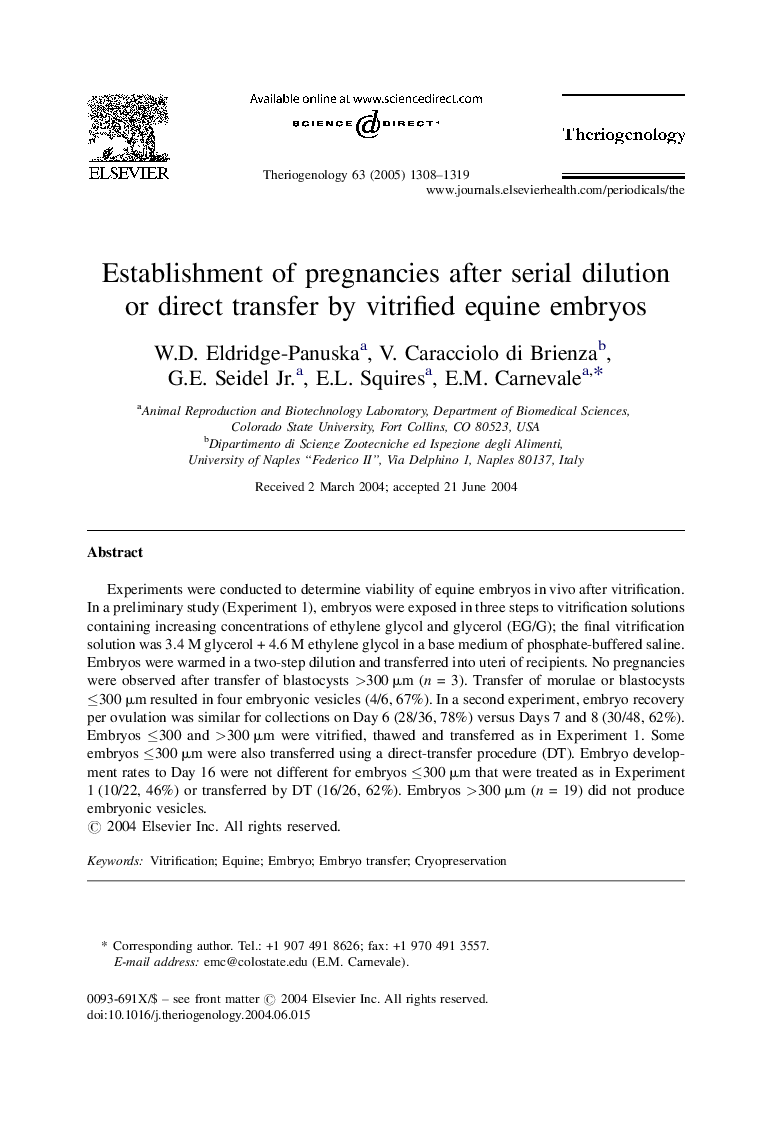| Article ID | Journal | Published Year | Pages | File Type |
|---|---|---|---|---|
| 10893268 | Theriogenology | 2005 | 12 Pages |
Abstract
Experiments were conducted to determine viability of equine embryos in vivo after vitrification. In a preliminary study (Experiment 1), embryos were exposed in three steps to vitrification solutions containing increasing concentrations of ethylene glycol and glycerol (EG/G); the final vitrification solution was 3.4 M glycerol + 4.6 M ethylene glycol in a base medium of phosphate-buffered saline. Embryos were warmed in a two-step dilution and transferred into uteri of recipients. No pregnancies were observed after transfer of blastocysts >300 μm (n = 3). Transfer of morulae or blastocysts â¤300 μm resulted in four embryonic vesicles (4/6, 67%). In a second experiment, embryo recovery per ovulation was similar for collections on Day 6 (28/36, 78%) versus Days 7 and 8 (30/48, 62%). Embryos â¤300 and >300 μm were vitrified, thawed and transferred as in Experiment 1. Some embryos â¤300 μm were also transferred using a direct-transfer procedure (DT). Embryo development rates to Day 16 were not different for embryos â¤300 μm that were treated as in Experiment 1 (10/22, 46%) or transferred by DT (16/26, 62%). Embryos >300 μm (n = 19) did not produce embryonic vesicles.
Related Topics
Life Sciences
Agricultural and Biological Sciences
Animal Science and Zoology
Authors
W.D. Eldridge-Panuska, V. Caracciolo di Brienza, G.E. Jr., E.L. Squires, E.M. Carnevale,
